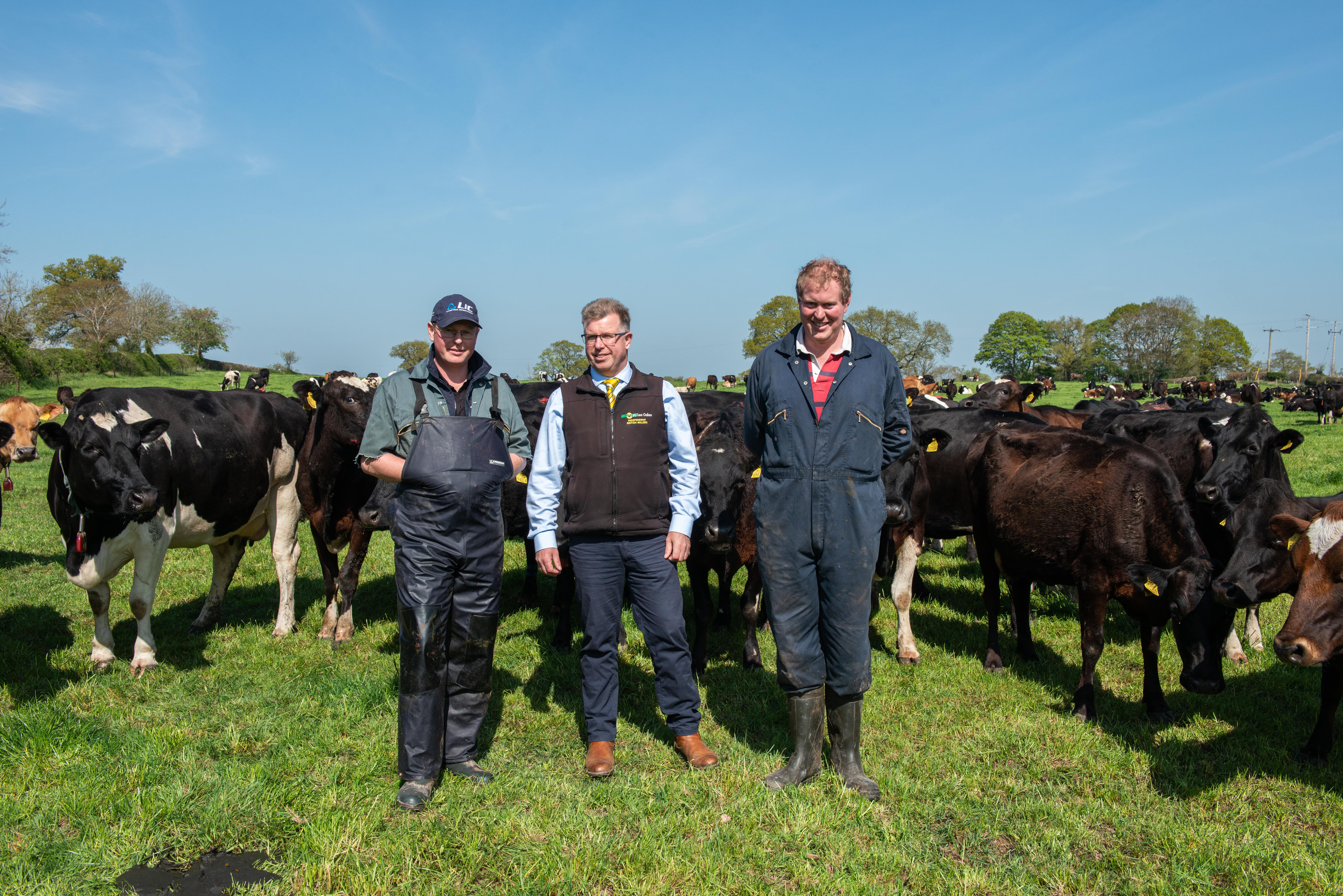New dairy enterprise puts milk from forage first
The Hanmer brothers from Hanmer in Shropshire began dairy farming in 2020, with a clear vision: milk from forage. George and Tom Hanmer are not your typical seasoned dairy farmers - they launched their dairy careers only in June 2020. They have worked together and separately on beef and sheep farms in the past – George also spent several years in Australia on dairy farms, and Tom previously worked part time as an estate agent. Their family own Bettisfield Park in Hanmer, Shropshire, which is where the brothers began farming beef and sheep, but they soon felt disillusioned with the industry and what it could offer them. Ambitious for growth, they had in mind a dairy enterprise.Adapting buildings and infrastructure
When land became available at Bettisfield Park, it seemed like the perfect time to launch into dairy farming. Together they submitted plans to the local council for a new dairy set up with modern facilities (including a new parlour and slurry lagoon) to secure a sustainable future for their farm. Fortunately, the Holebrook Farm tenancy suddenly became available which already had an existing dairy unit.
“We didn’t want to wait, we knew the sooner we got into production, the better,” says George. “We decided to use the existing farm buildings – despite their eccentricities – and we got to work, with milk production beginning in June 2020.”
As they planned to feed in the parlour, one of the first things George and Tom had to work on was adapting the existing BouMatic 29-a-side rapid exit parlour where cows are gently pushed away when finished to have feeders. It was unlike any parlour they’d used before, and they’ve been quietly adapting the machinery and layout where possible to better suit them.
Infrastructure too, was a challenge for the Hanmer brothers. “At the furthest point, the herd graze 1.8km from the parlour. We’ve had to invest heavily in creating more tracks and improving roadways”. While it wasn’t the state-of-the-art operation they’d planned, George and Tom are proud of how things are going so far, describing it as making ‘holistic changes’ to get by. This is also true of calving – they’ve taken a staged approach with their original purchase, breeding replacements, and gradually pushing back calving to suit the system they want. They calved in autumn 2021 at 82% in 6 weeks. They AI the herd for six weeks before introducing a bull. In 2023 they will begin their first spring block calving and all being well, will continue that way.
Milk from forage
Since day one, the Hanmer brothers had a clear vision for the business of driving milk from forage. They also supplement their forage with concentrate feed and do everything they can to maximise rumen efficiency as they know it is the key to production. They’ve enlisted the help of Phil Jackson, a nutritionist at HJ Lea Oakes, to get advice. Phil explains, “The Hanmers were clear on the vision; they wanted to concentrate on grass growth, get milk from forage and optimise cow nutrition. They also want to keep things as low cost as possible – which is why feed efficiency is crucial to them.” Phil began by testing their grass and silage to establish a benchmark to work from. “They have plenty of protein in the grass, around 30%, so they can keep the protein lower in the parlour nuts,” Phil says.
Phil’s concern was rumen efficiency and minimising costly dips in butterfats, so recommended the Hanmers try HJ Lea Oakes’s ActiGraze 15 nut, which has 5g Actisaf live yeast in it. He says, “The live yeast helps to stabilise the rumen pH, which is how you make sure the rumen is digesting the fibre in grass as well as it should be.”
Actisaf live yeast scavenges oxygen in the rumen so anaerobic bacteria (which help with fibre digestion) can flourish while lactic acid producing bacteria starve. “It’s like making silage,” explains Phil, “you cover it up to starve the aerobic bacteria of oxygen, otherwise you get poor fermentation – it’s the same principle with the rumen.”
Tom and George now feed 5kg of ActiGraze 15 at peak lactation, reducing the amount from July to January when the herd’s energy needs decrease. “We’re happy with the results,” says Tom. Our cows keep good condition, good cudding rates and production is where we want it. The muck looks well digested, there are no bubbles on the surface, so we feel confident the rumen is working well – plus we’re achieving 76% of our milk from forage.”
George continues, “as we slowly reseed each pasture, we’ll start introducing alternative forages like white clover – to see how it impacts our milk from forage, but also to help fix nitrogen in the soils.
“We’re planning to grow our numbers as fast as we can and keep pushing our milk from forage. We want to stay low input so we can invest in the farm. We’re also working on our data gathering and recording – which could open up other contracts to us and bring in a premium milk price. We’re getting the basics right first, like the nutrition, and making sure we are as efficient as possible, but the future looks very positive.”
Farm facts: Holebrook Farm, Bronington, Shropshire
- 340-head herd, Jersey/kiwi cross
- Arla contract
- Producing approximately 6,100 litres, with 4,636 litres from forage
- Butterfat 4.73% and protein 3.70%
- 23.5L milk and 1.85kg milk solids per cow per day on average
- 14kg DM/per day from grass on average
- 5kg HJ Lea Oakes ActiGraze 15 nut to make more efficient use of grazed grass (contains 5g live Actisaf Live Yeast)

